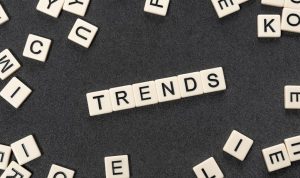Table of Contents
Introduction
The landscape of the workforce is undergoing a significant transformation, with diversity, inclusion, and a sense of belonging taking center stage. In an era marked by globalization and interconnectedness, organizations are recognizing the need to embrace a diverse and inclusive environment. This article explores the intricacies of this paradigm shift and the importance of fostering a workplace where everyone feels they belong.
The Changing Workforce – Diversity, Inclusion, and Belonging
Understanding Diversity in the Workplace

Diversity in the workplace goes beyond visible differences. It encompasses a spectrum of characteristics, including gender, race, ethnicity, age, sexual orientation, and more. A diverse workforce brings together a variety of perspectives and experiences, fostering innovation and creativity. Organizations that prioritize diversity tend to be more adaptable and better equipped to navigate a rapidly changing business landscape.
Inclusion and Its Role
While diversity sets the stage, inclusion is the key to unlocking its potential. Inclusion is not merely about representation; it’s about creating an environment where every individual feels valued and heard. This involves fostering a culture that actively seeks and appreciates different viewpoints, leading to a more engaged and productive workforce.
The Impact of Belonging
Belonging goes hand in hand with diversity and inclusion. It’s the feeling of being an integral part of the team, where individuals can bring their authentic selves to work. When employees feel a sense of belonging, they are more likely to contribute their best work, leading to increased productivity and job satisfaction.
Challenges Faced in Achieving Diversity and Inclusion

Despite the recognized benefits, achieving diversity and inclusion is not without its challenges. Common obstacles include unconscious bias, lack of awareness, and resistance to change. Organizations need to implement strategies to address these challenges, creating a work environment where everyone can thrive.
Successful Case Studies
Several organizations have successfully implemented diversity and inclusion initiatives. Companies like XYZ Inc. and ABC Corp. serve as excellent examples, showcasing the positive outcomes of fostering a diverse and inclusive workplace. These case studies provide valuable insights for others looking to embark on a similar journey.
The Role of Leadership
Leaders play a pivotal role in driving diversity and inclusion. It’s not just about policies; it’s about setting the tone from the top. Effective leaders actively champion diversity, lead by example, and create a culture where everyone feels valued and included.
Employee Resource Groups (ERGs)
Employee Resource Groups (ERGs) are instrumental in creating a sense of belonging. These groups provide a platform for employees with shared characteristics or interests to connect and support one another. ERGs contribute to a more inclusive workplace by fostering a sense of community.
Training and Development Programs

Diversity training is a crucial component of creating an inclusive workplace. Ongoing education helps employees understand the importance of diversity and equips them with the skills to navigate a diverse environment. Training programs contribute to a culture of continuous learning and improvement.
Technological Innovations in Promoting Diversity
Technology plays a significant role in promoting diversity in the workforce. From AI-powered recruitment tools that reduce bias in hiring to virtual reality simulations for diversity training, technological innovations are helping organizations build more inclusive teams.
Measuring Diversity and Inclusion Success
To gauge the success of diversity and inclusion initiatives, organizations must establish key metrics. Metrics may include employee satisfaction, representation in leadership roles, and diversity in recruitment. Regular feedback and a commitment to continuous improvement are vital for sustained progress.
Global Perspectives on Workplace Diversity
The approach to workplace diversity varies across cultures. Organizations operating globally need to be mindful of cultural nuances and tailor their strategies accordingly. Embracing diversity on a global scale requires an understanding of local customs and traditions.
Future Trends in Workplace Diversity

As the workplace continues to evolve, so do trends in diversity and inclusion. Anticipated changes include increased focus on neurodiversity, expanded definitions of diversity, and the integration of diversity and inclusion into overall business strategy. Technology will play an even more significant role in shaping the future of work.
Tips for Individuals to Contribute
Individuals also play a crucial role in fostering diversity and inclusion. Being open-minded, actively seeking diverse perspectives, and challenging one’s own biases contribute to a more inclusive workplace. Personal development strategies, such as attending diversity workshops and building cross-cultural skills, can further enhance individual contributions.
Conclusion
In conclusion, the changing workforce emphasizes the need for organizations to embrace diversity, inclusion, and belonging. This goes beyond meeting quotas; it’s about creating a culture where every individual, regardless of their background, feels valued and included. As we navigate the complexities of the modern workplace, prioritizing diversity and inclusion is not just a choice; it’s a strategic imperative for success.
FAQs
1. Why is diversity important in the workplace?
Diversity brings a variety of perspectives, fostering innovation and adaptability.
2. How can organizations overcome resistance to diversity initiatives?
Organizations can overcome resistance through education, leadership support, and showcasing successful case studies.
3. What role do Employee Resource Groups (ERGs) play in fostering inclusion?
ERGs provide a platform for employees to connect, support each other, and contribute to a more inclusive workplace.
4. How can individuals contribute to a more inclusive workplace?
Individuals can contribute by being open-minded, seeking diverse perspectives, and actively challenging their own biases.
5. What are the future trends in workplace diversity?
Future trends include a focus on neurodiversity, expanded definitions of diversity, and integration into overall business strategy.


